English
Intent
At Coppetts Wood, our English curriculum is designed with and for our children. It is knowledge rich and concept driven; we believe that learning should be purposeful, memorable and apply English-specific skills every single day.
It is our aim for children to listen, speak, read and write confidently, fluently and with a breadth of understanding that will enable them to grow as independent and life-long learners in the wider world.
Through our teaching of English, we aim to foster in children a love of reading so that they can express themselves creatively and imaginatively as they become enthusiastic and competent writers.
Children gain an understanding of how language works by looking at its patterns, structure and origins and through a quality range of genre and culturally diverse core texts. At Coppetts Wood, we provide purposeful and authentic opportunities to develop and apply these skills across the wider curriculum.
Through memorable, real-life writing purposes that link to their learning, we believe that our pupils respond by challenging themselves to write with genuine enthusiasm, creativity and accuracy for their audience. We set high expectations and challenge the children to take pride in their work when they draft, edit and then publish their writing. We aim to meet the needs of all the children by providing quality first teaching so that learning is adapted and supported to reflect the needs of all learners. Progress is robustly monitored so that children are challenged and supported to achieve their full potential with increasing accuracy and enthusiasm for their audience.
How do we ensure a breadth of knowledge and skills?
English is a core subject in the National Curriculum. At Coppetts Wood, we use a variety of teaching and learning styles which follow the aims of the National Curriculum 2014. Our principal aim is to develop children’s knowledge, skills, and understanding. We do this through a broad and balanced curriculum in which children are at the centre of their learning. They experience a range of strategies and approaches for example, English lessons provide creative opportunities to immerse themselves in the core reading text before sharing the experience of writing with their teacher and peers to support their final writing outcomes. Phonics, spelling, grammar and handwriting lessons promote, embed and enhance their learning. Pupils are also provided with opportunities to learn about themselves, their community and the school values that they have chosen. This will enable them to make the most of these important links with the wider world.
Teaching Writing at Coppetts Wood
Our writing intentions are that children:
- Write for a purpose
- See themselves as real writers
- Take ownership of their writing
- See writing as an interesting and enjoyable process
- Acquire the ability to organise, plan and edit their written work
How do children make progress?
At Coppetts Wood, we follow a progression map. This provides children with opportunities to learn about different genres of writing and apply this to a variety of contexts that explore a termly concept curriculum driver. This ensures that writing is purposeful and engaging and builds on prior learning. Writing is developed throughout the school and progression is planned using the National Curriculum programmes of study and the Writing for a Purpose document, which is reflected in our long term planning. This outlines the 4 writing purposes, the text types, key features, and relevant grammar, punctuation and spelling linked to these purposes.
Teaching Reading at Coppetts Wood
Reading is at the heart of our curriculum. As children’s reading develops at different rates, teaching is tailored to each child and their ability, with a focus on instilling in our children a word-rich vocabulary that will enable them to access a variety of texts. This begins in the classroom with cross-curricular displays that provide a vocabulary-rich environment to inspire and encourage our children to understand, practise and apply new words to their everyday oracy and written language. By including a vast range of vocabulary in all lessons and the physical learning environment, we aim to embed high quality language and increase children’s retention of key vocabulary, which they can then understand and use accurately and independently. Through the tiered approach, children also learn how to group vocabulary based on their common usage and make links between words based on definition and etymology.
Children read daily in the classroom, either in shared reading pairs, one-to-one with a member of staff, or within whole class sessions. Staff teach and model reading skills to all children, before building on each child’s understanding of vocabulary, to increase their confidence and individual bank of word knowledge. We continuously encourage all children to read a range of texts both in school and at home, so that they have as many opportunities as possible to discuss the meaning of texts, build on their knowledge of language and make links between texts and vocabulary. Children are given lots of opportunities to ask questions, explore texts in depth and become used to answering a range of questions accurately and in a clear, succinct manner. They then have further opportunities to independently apply their knowledge and skills.
Teaching Phonics at Coppetts Wood
At Coppetts Wood, we use FFT Success for All Phonics to teach phonics to children in Nursery, Reception and Year 1.
To find out more about the teaching of phonics at Coppetts Wood, take a look at our phonics page.
- englishappendix1-spelling 306782635
- englishappendix2-vocabularygrammarandpunctuation 306782635
- primarynationalcurriculum-english220714 306782635
- writing-cycle-2021 306782635




